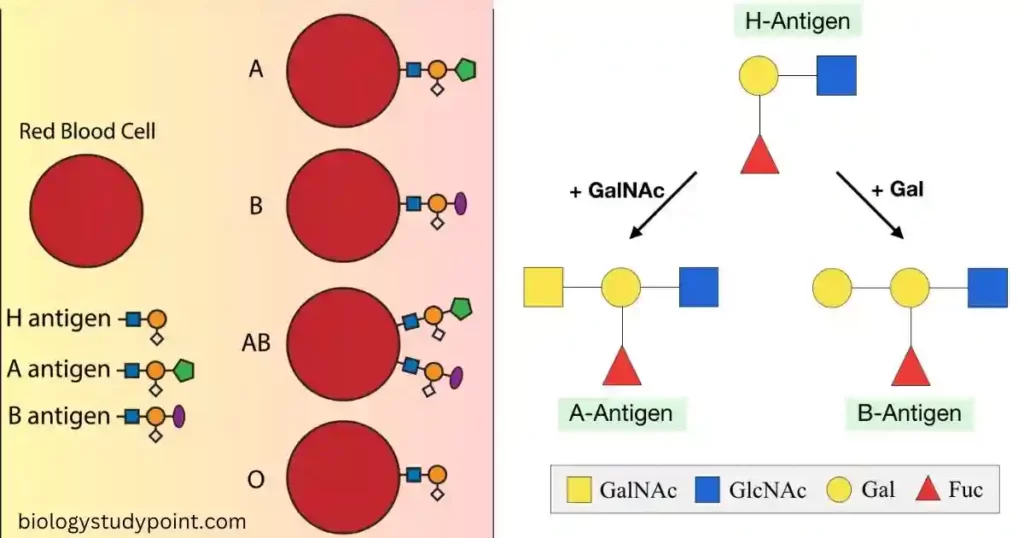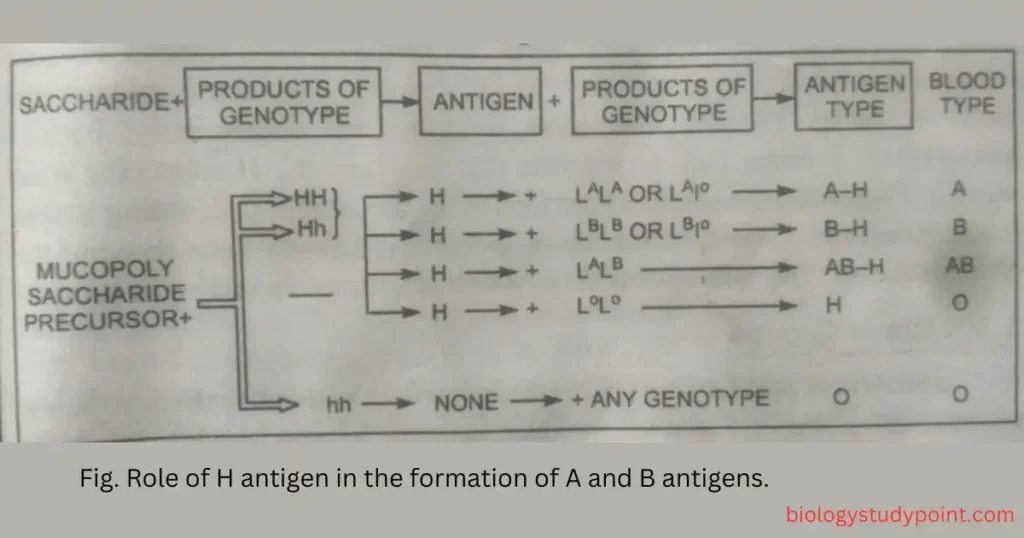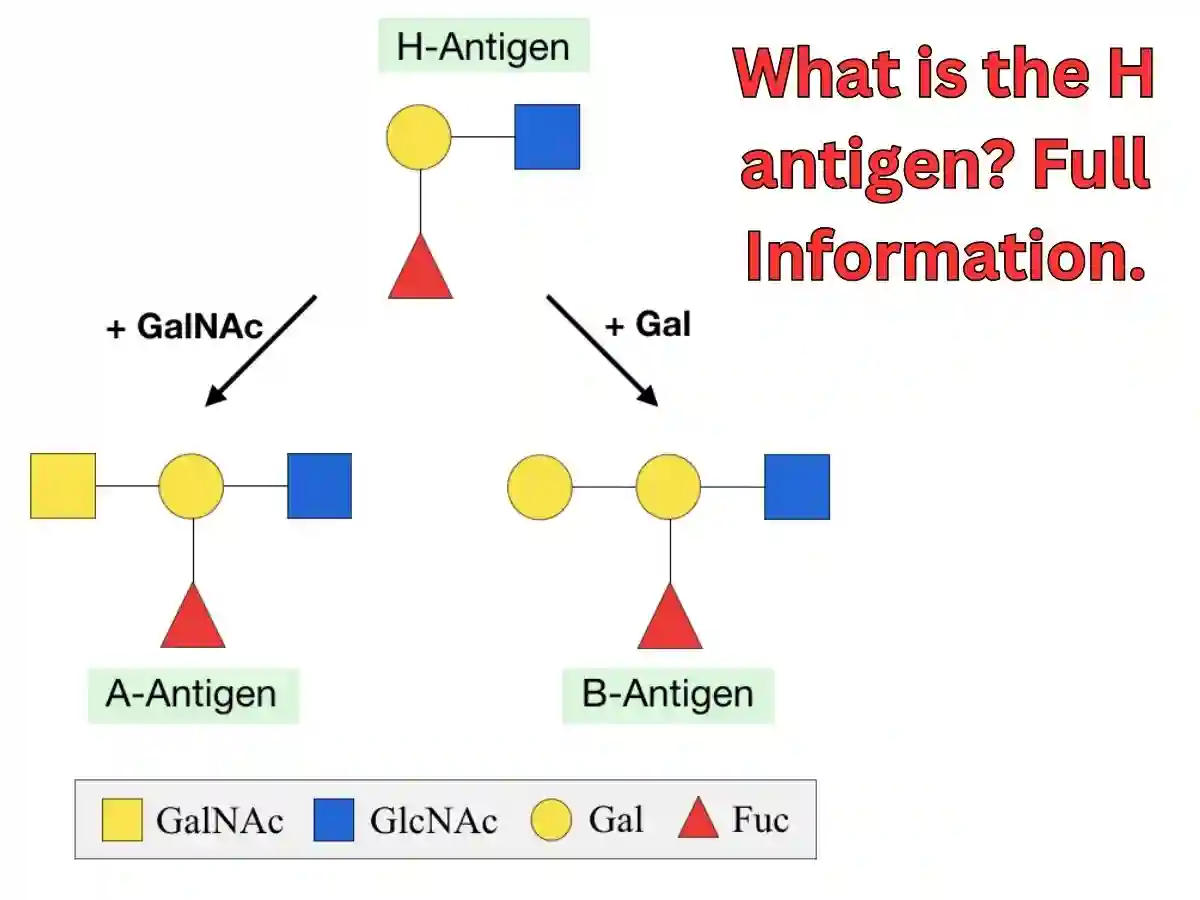Hello, guys, In today’s this article we will study about H Antigen. Like – what is the H antigen? What is the Bombay phenotype? We will know the answers to many such questions today, so let’s start.
What is the H antigen, and what is the Bombay phenotype?
In ABO blood group system, antigen A and antigen B are polymucosaccharides. Their carbohydrate chain is bound to the lipid molecule on the surface of plasma membrane of RBCs. The terminal monosaccharide molecule of these carbohydrate chains is different in antigen A and B.

In is N-acetyle-α-D-galactosamine in antigen A and α-D-galactosamine in antigen B. The allele LA directs synthesis of enzyme N-acetyl galactosaminyl transferase which controls the addition of modified N-acetyl-α-D galactosamine to the carbohydrate chain. Allele LB controls synthesis of enzyme glactosyl transferase, which determines the addition of α-D-galactosamine.
Both antigen A and B are synthesized from a precursor, called H-substance. This substance lacks both the terminal monosaccharides found in antigen A and B. Another pair of alleles., HH or Hh converts the precursor into antigen H.
- Blood group A persons have genotyped LA – H – (i.e. LA LA HH or LA LA Hh or LA lo HH or LA lo Hh)
- Blood group B persons have genotype LB – H —.
- Blood group AB persons have genotyped L LBH–.

Blood group O persons are found to have the following different genotypes.
- hh – – (i.e. hhLALA, hhLBLB, hhLALB, hhLAlo or hhLBlo or hhlolo)
- Hhlolo
- Persons with hh are unable to convert mucopolysaccharide precursor into antigen H, because of absence of gene H, which is necessary for the synthesis of antigen A and antigen B. Persons with gene LA or gene LB fail to produce the specific antigen and exhibit O phenotype, i.e. person with LALA hh or LBLB hh or LA LB hh genotypes also have blood group O.
- Persons with HHlolo are able to concert precursor into antigen H. Therefore, their RBCs have antigen H on the surface. But because of lolo genotype, antigen H is not converted to other antigens and persons have blood group O.
The hh condition was first reported in 1952 from Bombay in a woman. Therefore, this is called Bombay phenotype, Its frequency is estimated to be 1 in 13,000 in Bombay. Persons with Bombay phenotype lack both the A and B antigens and are typed as O.
Because of recessive mutation h, antigen H is not synthesized. The terminal portion of the carbohydrate chain protruding from the membrane of RBCs lacks the monosaccharide, α-L-fucose. In the absence of fucose, the enzymes specified by LA or LB allele fail to add terminal α-D-galactose or N-acetyl-α-D-galactosamine and to synthesize antigen A or B.
Secretory Trait –
The antigen A, B, AB and H which are present on surface of RBCs are also found in the various body secretions such as secretions of eyes, nose and salivary glands. This is called secretory trait. It is controlled by a single pair of genes Se and se.
The dominant gene Se controls the secretion f these antigens in the body fluids. About 77 to 78% of persons have dominant genotype Se/Se or Se/se. Persons with se/se genotype are nonsecretory, because nonsecretory persons lack an enzyme that modifies the H substance water-soluble.
Therefore, nonsecretory persons make the antigens according to their blood group but can not secrete them. Secretory persons have an enzyme that changes the antigens into soluble form, which is secreted in body secretions.
MN Blood Groups –
Landsteiner and Levine (1927) discovered MN blood system. A pair of codominant alleles LM and LN produce antigen M and antigen N. These alleles produce three blood groups: M, N and MN. The persons belonging to these blood groups have respective antigens, but do not have natural antibodies against these antigens.
Therefore, MN blood system has no Importance in blood transfusion. However, each native antigen M or N produces an antibody response when injected into rabbit.
S/s Antigens –
In 1947 another pair of antigens S/s were found to be associated with M and N series. The genes for S and s antigens MS and NS are not allelic of the MN genes. Race and Sanger (1968) have described these genes as codominant and closely linked and interrelated with MN genes. The different gene combinations of MN and Ss series can be – MS, Ms, NS, Ns, MNSS, MNSs or MNss.
Conclusion –
So friends, in today’s article we have studied about h antigen. Friends, if you like this article, then please comment and tell your suggestions and our mistakes.
Thanks
